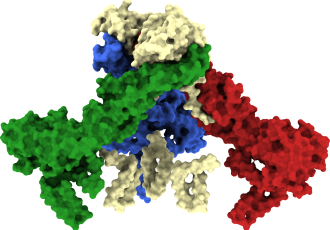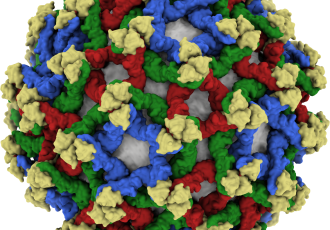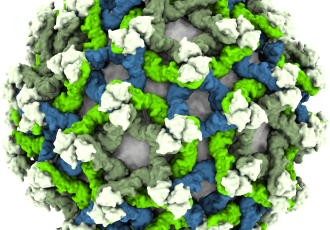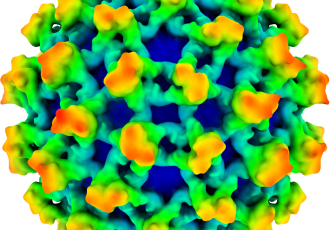3. July 2024
Tick-borne encephalitis is a serious neurological disease caused by the tick-borne encephalitis virus. An international team of scientists led by Pavel Plevka from CEITEC Masaryk University (MUNI) and Sarah Butcher from the University of Helsinki focused their research on unraveling the structure of the non-infectious, immature tick-borne encephalitis virus particle and described in detail the interactions of the virus envelope proteins and the differences in their arrangement on the surface of the immature particle compared to the mature, infectious particle. The conclusions of their study expand the portfolio of knowledge about tick-borne encephalitis virus and may lead to the development of new antiviral drugs targeting virus maturation in the future.
Tick-borne encephalitis virus (TBEV) is a pathogen that infects various species of ticks, birds and mammals, including humans. In humans, it causes tick-borne encephalitis (TBE), which can lead to long-term sequelae and, in some cases, death. Despite the availability of vaccines, the number of cases of tick-borne encephalitis has been growing over the last decades, with approximately 10 000 to 15 000 annual cases reported worldwide.
Detailed structural information on immature particles of flaviviruses, which include TBEV, has so far been available only for mosquito-borne viruses such as Spondweni and Binjari, not for tick-borne viruses. Therefore, the Czech-Finnish team of scientists focused on studying the molecular structure of the immature form of TBEV and the differences in the surface arrangement of its proteins compared to the infectious mature form. Their study was published in Science Advances in early July.
The main method used in the research was cryo-electron microscopy, which they employed to analyse the immature virus prepared in the laboratory. "The TBEV virus assembles in the cell in the form of so-called immature particles, which differ from the mature ones in shape and that they are non-infectious. We found that specific protein interactions on the surface of the particle play a crucial role in its structure and maturation process. Gradually, as the virus moves out of the cell, some of the proteins on the surface of the viral particle are cleaved. Once the particle is released from the cell, an infectious mature virus is formed, which can infect other cells. This process turns the surface of the immature particle, which is covered with spike-like protrusions, into a smooth arrangement of the mature virus," says Tibor Füzik, one of the study's lead authors. "Interestingly, during this process, there is a significant reorganisation of all the surface proteins of the viral particle, as well as the parts anchoring these proteins in the viral membrane," adds Pavel Plevka.
This study helps to understand the molecular interactions of the proteins that form the tick-borne encephalitis virus envelope and opens the way for further research to understand the mechanisms that control the maturation process of flaviviruses. In the future, this knowledge may provide the basis for the development of new antiviral drugs that inhibit virus maturation and thus the formation of infectious viral particles.
Czech and Finnish scientists collaborated on the research - colleagues from the University of Helsinki were complemented on the Czech side by researchers from the Structural Virology lab and Cryo-Electron Microscopy and Tomography core facility at CEITEC MUNI, Faculty of Science MUNI, Veterinary Research Institute and Biological Centre CAS. The study is part of a research project funded by the National Institute of Virology and Bacteriology (Exceles Programme LX22NPO5103, funded by the European Union, Next Generation EU)


 Share
Share







